In Part 1 of this blog series, I explained the possible ramifications of a thumb sucking habit. In Part 2, I discussed the ideal age to try to stop thumb sucking. In this blog, I’ll answer the million dollar question: how can I get my child to stop sucking her thumb? (Disclaimer: I reserve the right to revise this blog post in 5 years when I am trying to make Ada stop sucking her thumb)
As mentioned in Part 2, I believe that it is very important to consider the psychological and emotional state of the child. I think it can be unproductive and even borderline traumatic to force cessation on a child who is not on some level ready to stop the habit. So, the first step for me is a conversation with the child. I believe that it is imperative to establish trust. Some questions that I may ask are:
“Can you show me how you put your finger in your mouth?”
“Do you do this at night?” Usually the answer is “yes.”
“Do you do this at school?” Usually the answer is “no.”
“Would you feel embarrassed to do this at school?” Usually the answer is “yes.”
“Do you know that putting your finger/thumb in your mouth can cause problems with your teeth?”
“Would you like to try to stop the habit?” If the answer is “no,” then I’d probably opt to revisit the issue in the future when the child is more ready psycho-socially.
If the child is ready to stop the habit, I like the KIS (Keep it Simple) approach. Here are some options:
- Mavela Stop: this can be purchased cheaply on Amazon and also can help break nail biting habits. You paint it on to the finger nail to make it taste bad. It is a favorite of orthodontists everywhere, works great for daytime and nighttime habits, and is, in my opinion, the easiest thing to try. Of course, I have had a patient that liked the taste…
- With medical tape, you can tape popsicle sticks (actually, I prefer the sturdier medical option—tongue depressors) to the finger. This works great for nighttime habits only; it makes it physically hard and unpleasurable to suck on the finger.
- Some parents don’t like the possibility of their child poking themselves with popsicle sticks, so taping a sock over the hands at night is a decent option.
- There are also some gloves for sale that are advertised to help stop thumb sucking.
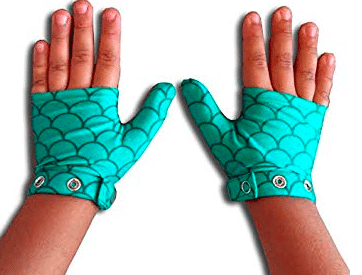
And, there is this. I have no experience with this and am not promoting this product but I think it is humorous. It prevents kids from flexing the elbow enough to suck their thumb.
Only if the “simple” approaches don’t work would I opt for an orthodontic solution. Orthodontic solutions would be tailored to the individual needs of the patient but may include:
- Tongue spurs (sharp reminders to not put fingers (or the tongue) where they don’t belong
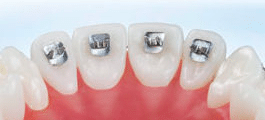
- Palatal expanders: this can correct crossbites while also blocking the roof of the mouth—often the target for thumb sucking.
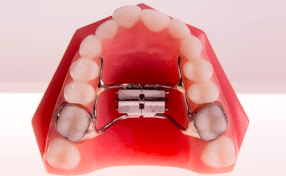
- Bluegrass appliances: like palatal expanders, these block the roof of the mouth but also can help retrain tongue position
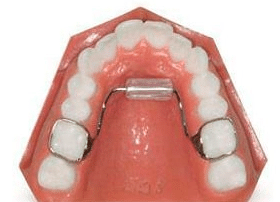
- Tongue cribs: these also occlude the roof of the mouth and prevent the tongue from thrusting forward between the upper and lower teeth.
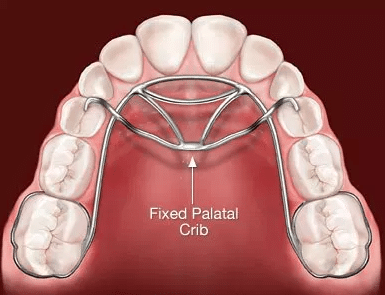
Again, better to try the simple solutions before trying one of the orthodontic solutions! And, while I have offered simple solutions to try at home, I believe there is value to seeing an orthodontist. My experience is that kids sometimes need a medical professional’s urging to do the very thing the parent has been suggesting. Aren’t most of us more receptive to advice that doesn’t come from a parent??? Plus, as an orthodontist, I’m equipped to evaluate and treat problems that have affected growth. So, if your child has a thumb sucking habit, come see me; the consultation is complimentary!

